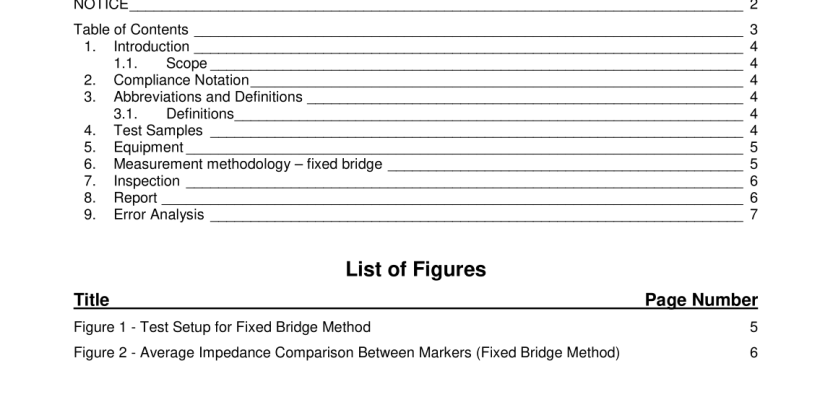ANSI SCTE 66-2016 pdf download.Test Method for Coaxial Cable Impedance
1.1. Scope
The purpose of this procedure is to provide instructions for measuring coaxial cable impedance. The cable impedance as a function of frequency is calculated from a vector (magnitude and phase) return loss. The average of this impedance across the desired frequency range is the cable impedance. This may be automated, but requires a vector network analyzer, and may be subject to errors due to the cable connection.
2. Compliance Notation
This word or the adjective“required’ means that the item is an absolute requirement of this document. This phrase means that the item is an absolute prohibition of this document. This word means the value specified shall never be used. This word or the adjective“recommended’ means that there may exist valid reasons in particular circumstances to ignore this item, but the full implications should be understood and the case carefully weighted before choosing a different course. This phrase means that there may exist valid reasons in particular circumstances when the listed behavior is acceptable or even useful, but the full implications should be understood and the case carefully weighed before implementing any behavior described with this label. This word or the adjective“optional’ means that this item is truly optional. One vendor may choose to include the item because a particular marketplace requires it or because it enhances the product, for example; another vendor may omit the same item. Use is permissible for legacy purposes only. Deprecated features may be removed from future versions of this document. Implementations should avoid use of deprecated features.
4. Test Samples
Cable impedance is typically tested on whole reels of coaxial cable and two (2) tests are performed, one from each end of the cable. The cable to be tested must be terminated with a precision connector and a fixed, precision 75 ohm load for normal cable lengths. The effect of reflection from the end termination is reduced by twice the cable loss, such that for long lengths of cable, the precision of the end termination is not significant. For shorter lengths of cable, the end termination return loss plus twice the cable loss must be included in error analysis.
The input cable connector must be a good impedance match to the cable impedance or the measurement results will be affected. The cable must be prepared according to both the cable and connector manufacturer’s instructions. Improper cable preparation can be a major source of error in impedance measurements.
5. Equipment
Network analyzer with impedance measuring capability, such as Agilent ENA Series, including fixed impedance (75 ohm) test bridge or equivalent
Calibration kit, such as Agilent 85036B or equivalent
Computer or built in analyzer functions to process fixed impedance data
Termination (75 ohm load) for far end cable termination (the load in the calibration kit may be used)
Two (2) test port to cable precision adapters for the size of cable under test
Equipment setup is shown in Figure 1
6. Measurement methodology – fixed bridge
Set up the network analyzer by setting the start frequency to 5 MHz. Set the stop frequency such that the input connector does not overwhelm the measurement. At high frequencies, the return loss of the input connector can distort the cable response. A recommended stop frequency of 210 MHz is to be used unless a higher frequency is required by specific customer applications. At higher test frequencies, connector compensation techniques may be required. Consult specific manufacturer’s instructions for more details on connector compensation. Perform a calibration (error correction) following the manufacturer’s instructions. Using a vector network analyzer, this is a 1-port open/short/load calibration. Connect the cable under test to the network analyzer test port. Terminate the far end of the cable in fixed, 75 ohm precision termination. Measure the return loss over the frequency span.ANSI SCTE 66-2016 pdf download
